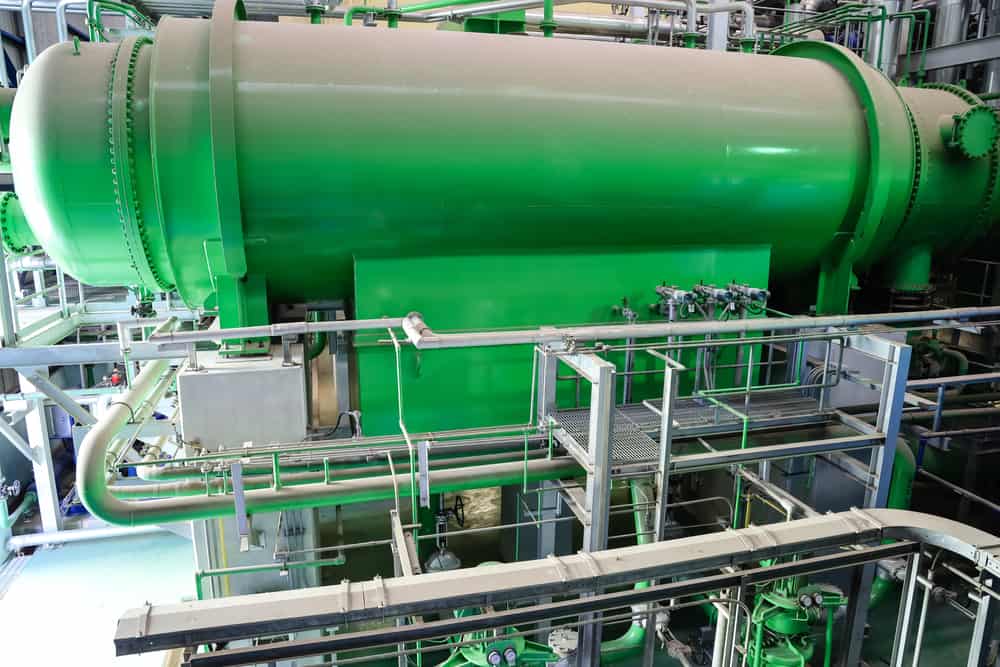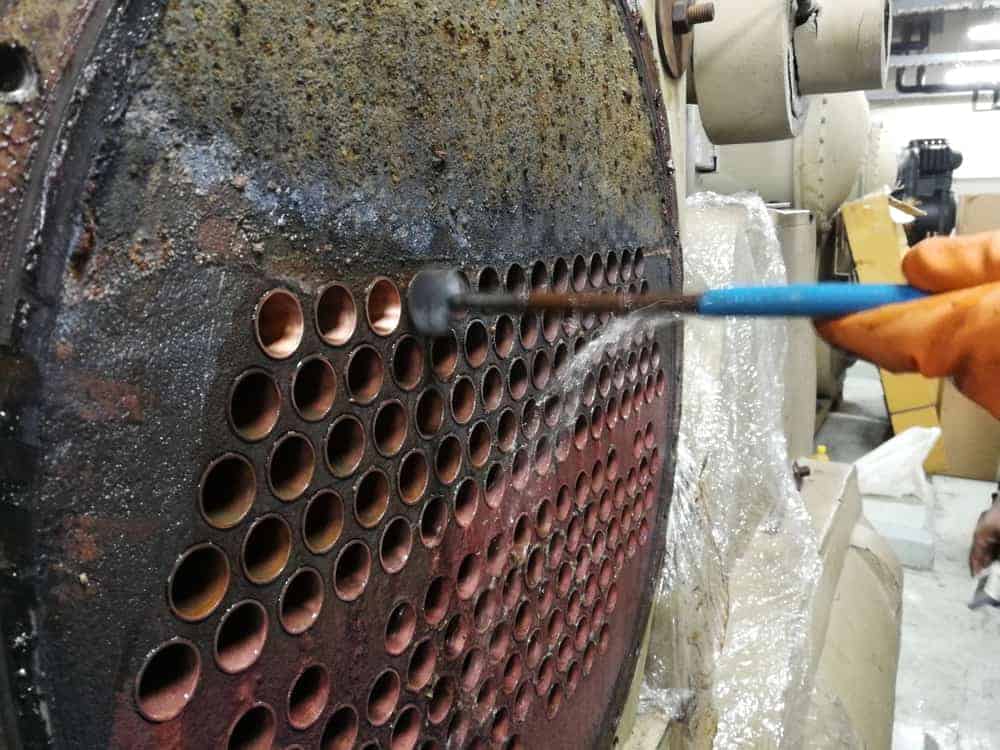
Industrial condensers generally are considered a small part of the air conditioning system that condenses the coolant back into the liquid state. However, in industrial applications—such as power generation, food and beverage, and refrigeration for functions from water treatment to chemical processing—these condensers perform a critical role.
While condensers may apply to a wide range of applications, they often are custom fabricated to meet specific industry standards that may require unique surface preparation and weld techniques. Fabrication styles across these various applications can leverage orbital technology to help maintain quality and ensure productivity when welding critical industrial condensers.
Different Industrial Condensers
Condensers are heat engines that transfer heat from the hot working fluid (vapor or steam) and condense it to a liquid phase. Diverse industries can use this mechanism for many purposes. For instance, in the power generation industry, a condenser can condense a turbine’s exhaust steam back to water so it can cycle back to the heating unit. In the chemical processing industry, condensers transfer heat within the stream to condense various chemical vapors.
Depending on the application, condensers must handle varying pressure and temperature levels. Described below are the most prominent types of industrial condensers:
- Air-cooled condenser: Predominately found in residential condensing units, these condensers use air as the medium to remove heat from the refrigerant flowing inside the coil. However, the flow mechanism of these condensers can be carried out in more than one way.
- Natural convection- As the air contacts the coil, it absorbs the heat from the refrigerant flowing within. The hot air then rises as it lightens and replaces the cold air. The cold air pushed down then makes contact with the hot coil, absorbing heat from the refrigerant and rising up. This cycle goes on until the refrigerant is sufficiently cooled.
- Forced convection- This condenser uses a fan or blower to induce air flow along the condenser tube.
- Water-cooled condenser: As the name suggests, a water-cooled condenser uses water as the cooling fluid. Its complex and high-capacity design generally is preferred for industrial applications. Based on design and functionality, water-cooled condensers can be subdivided into the following categories:
- Double tube condensers- These condensers have a large refrigerant tube that contains a water tube. The water absorbs heat from the refrigerant in the tube, condenses it, and settles it at the bottom of the tube. Heat also escapes through the tube’s opening.
- Shell and coil condenser- Refrigerant passes through the welded shell while water circulates through the coil to condense the refrigerant.
- Shell and tube condenser- These condensers have straight water tubes contained within a cylindrical steel shell. The refrigerant flows in the shell while water in the tubes condenses the refrigerant.
Water-cooled condensers are a common component of large refrigeration plants and chemical processing industries.
- Evaporative condenser: These condensers combine the functionality of air and water-cooled condensers. The water is pumped and sprayed on the refrigerant coil to release heat. At the same time, air is drawn from the inlet at the bottom of the condenser toward the coil to further cool the refrigerant. Evaporative condensers are commonly used in commercial HVAC applications.
Given the unique fabrication requirements of each condenser type, many components must be welded together, with weld quality affecting the performance and reliability of the entire system.
Unique Welding Needs of Industrial Condensers

Condenser welding requires welders to apply intricate and precise fabrication techniques for applications that include tanks, shells, condenser tubes, and tubesheets. Often, the condenser tubes are made of stainless steel or titanium. And frequently, they are thin-walled and placed in close proximity to each other. These tubes must also be connected to the tubesheet, which can present issues that could:
- Restrict access during welding and inspection.
- Inhibit complete weld penetration and consistency.
- Complicate repairs for any errors or damage.
In light of these challenges, manual welding is not practical if manufacturers demand high-quality welding and productivity.
For the custom fabrication of industrial condensers, companies choose orbital welding because its automated processes ensure weld consistency, quality, and efficiency. The advantages of orbital welding include:
- The ability to deploy multiple weld heads simultaneously to ensure high-quality and consistent weld seams.
- Parameter control that allows orbital welding to produce repeatable results for high-volume tube-to-tubesheet welding.
- The performance of expand and seal welds and strength welds for tubes across a wide range of diameters.
- Weld head alignment and positioning controlled by automation to increase the accuracy of results.
Apart from these benefits, orbital welding provides a cost-effective solution for industrial manufacturing.
Orbital Welding for High-Quality Condensers
Industrial condensers operate in very harsh conditions. For instance, they can be exposed to high temperatures and pressure, as well as chemical reagents. Therefore, design engineers face a considerable challenge when selecting the optimal fabrication method to minimize condenser tube failure. Be sure to attend to the following guidelines:
- Choose the right tube material. Stainless steel and titanium are preferred materials because they resist water or steam-induced corrosion.
- Adhere to standards. For instance, ASTM B163 provides specifications for fabricating nickel or nickel-alloy condenser tubes.
- Choose the right tube welding machine. The ideal machine is automated, easy to operate, and provides excellent parameter control.
- Ensure proper joint preparation. Whether the weld requires grooving or not, orbital welding can perform all types of tube-to-tubesheet welding.
With correct preparation and welding techniques, manufacturers can prevent tube failure and ensure that industrial condensers accomplish much more than just air conditioning.
Arc Machines, Inc. leads the welding industry in high-quality orbital welding equipment and services. Our orbital welding machines and tube-to-tubesheet welding solutions such as Model 6 weld heads can help you meet standards when welding industrial condensers. For inquiries regarding products, contact sales@arcmachines.com. For service inquiries, contact service@arcmachines.com. Contact us to arrange a meeting to discuss your specific needs.




